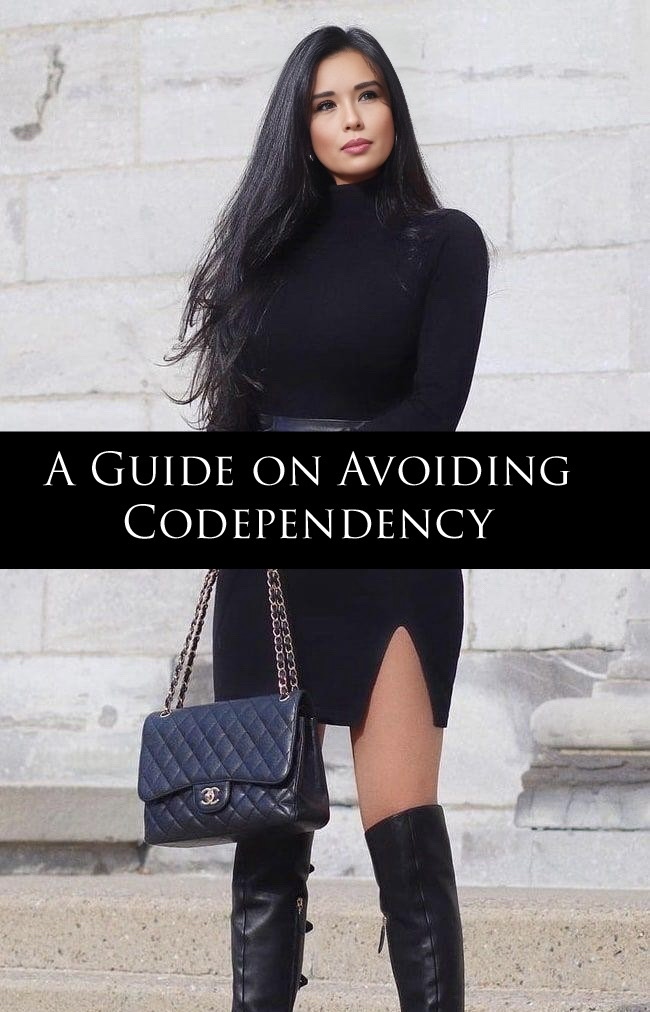
Embarking on the journey to overcome codependency requires courage and a commitment to self-discovery. This article offers practical insights for individuals seeking positive changes in their relationships, presented in straightforward terms for easy understanding.
Understanding Codependency
Codependency is a pattern of unhealthy behaviors and dependencies in relationships. It often involves an excessive focus on being with someone, where normal days feel incomplete without the other partner. This leads to sacrificing one’s own well-being and struggling with setting and maintaining boundaries. At its core, codependency is driven by a deep desire for approval and a fear of rejection and abandonment.
Recognizing Codependent Patterns
The first step in overcoming codependency is self-awareness. Take a close look at your behavior and identify patterns that indicate codependent tendencies. Ask yourself:
- Do you rely heavily on others for your sense of identity and self-worth?
- Is setting and maintaining boundaries a challenge for you?
- Do you find it difficult to say “no” without feeling guilty?
- Are you constantly seeking validation and approval from others?
- Do you often feel responsible for others’ emotions or actions?
- Is there a fear of abandonment that influences your decisions and actions?
- Do you frequently put others’ needs ahead of your own, neglecting self-care?
- Are you enmeshed in relationships, losing a sense of your individual identity?
- Do you struggle to balance daily life and prioritize your own needs?
Understanding these patterns lays the groundwork for breaking free from codependency.
Educating Yourself: Empowering with Knowledge
Knowledge is a powerful ally in the battle against codependency. Educate yourself about codependent relationships, understanding how they can impact your mental and emotional well-being. Recognize that codependency often has roots in early experiences, such as dysfunctional family dynamics or trauma, shaping relationship patterns later in life.
Therapeutic Support: A Guiding Hand
Seeking professional help is instrumental in the journey to recovery. Therapists specializing in codependency provide a safe space for exploration, helping you understand underlying issues and develop coping mechanisms. Individual therapy offers tailored strategies to address your specific challenges.
Setting Boundaries: Prioritizing Self-Care
Establishing and maintaining boundaries is essential for overcoming codependency. This involves:
- Identifying personal limits and communicating them assertively.
- Learning to say “no” when necessary without guilt or fear.
- Prioritizing self-care and ensuring your needs are met alongside others’.
- Avoiding the urge to fix or rescue others, allowing them to navigate their challenges independently.
- Understanding that setting boundaries is an act of self-love, not selfishness.
Boundaries safeguard your well-being, preventing the erosion of self in the pursuit of others’ happiness.
Self-Care Practices: Nurturing Your Core
Self-care is not a luxury but a necessity on the road to recovery. Engage in activities that bring joy, relaxation, and fulfillment. Whether it’s reading, painting, or a walk in nature, these rituals replenish your emotional reserves and reinforce the importance of self-nurturing.
Independence: Rediscovering Your Identity
Codependency often involves losing oneself in relationships. Reclaim your individuality by:
- Cultivating personal interests and hobbies independently.
- Building a strong sense of self through self-reflection.
- Recognizing and embracing your uniqueness apart from relationships.
- Establishing goals and pursuing personal growth outside of relational dynamics.
Independence is a journey of self-discovery, creating a harmonious balance between individual and relational identity.
Building a Support System: Allies on the Journey
Share your experiences with trusted friends, family, or support groups. A supportive network provides encouragement, understanding, and a safety net during challenging times. Allies on this journey offer fresh perspectives and contribute to a sense of community.
Challenging Negative Thoughts: Rewriting Your Narrative
Codependency often manifests in negative thought patterns related to self-worth and dependency. Challenge and reframe these thoughts with positive affirmations. Replace self-criticism with self-compassion, acknowledging that imperfections are part of the human experience.
Effective Communication: Asserting Your Voice
Developing assertiveness skills is pivotal in breaking codependent patterns. Express your needs, desires, and opinions openly and respectfully. Effective communication builds bridges to understanding, fostering healthier interactions.
Exploring Core Beliefs: Addressing Root Causes
Delve into the core beliefs that contribute to codependency. Examine messages received in childhood and challenge those that no longer serve you. By addressing root causes, you can reshape your perspectives and cultivate healthier relationship dynamics.
Mindfulness and Self-Reflection: A Daily Practice
Integrate mindfulness into your daily routine. Mindfulness fosters self-awareness, allowing you to observe thoughts and emotions without judgment. Regular self-reflection encourages a deeper understanding of your triggers and responses, empowering you to make intentional choices in relationships.
Setting Realistic Expectations: Redefining Relationship Dynamics
Rethink your expectations in relationships. Understand that healthy connections involve interdependence, not complete reliance. Redefine success in relationships by focusing on mutual growth, respect, and shared values.
The Healing Path: Embracing Growth
Healing from codependency is an ongoing process of self-discovery and growth. Acknowledge the progress made, celebrate small victories, and embrace the journey as an opportunity for transformation. It’s not about perfection but continuous improvement and self-acceptance.
Conclusion: Embracing a New Chapter
Breaking free from codependency is a profound journey of self-discovery, self-love, and redefined relationships. Armed with self-awareness, knowledge, and an array of practical strategies, you have the power to rewrite the narrative of your relationships and embrace a new chapter of healthier, more fulfilling connections. Every step forward is a step toward liberation and the authentic, empowered version of yourself.


